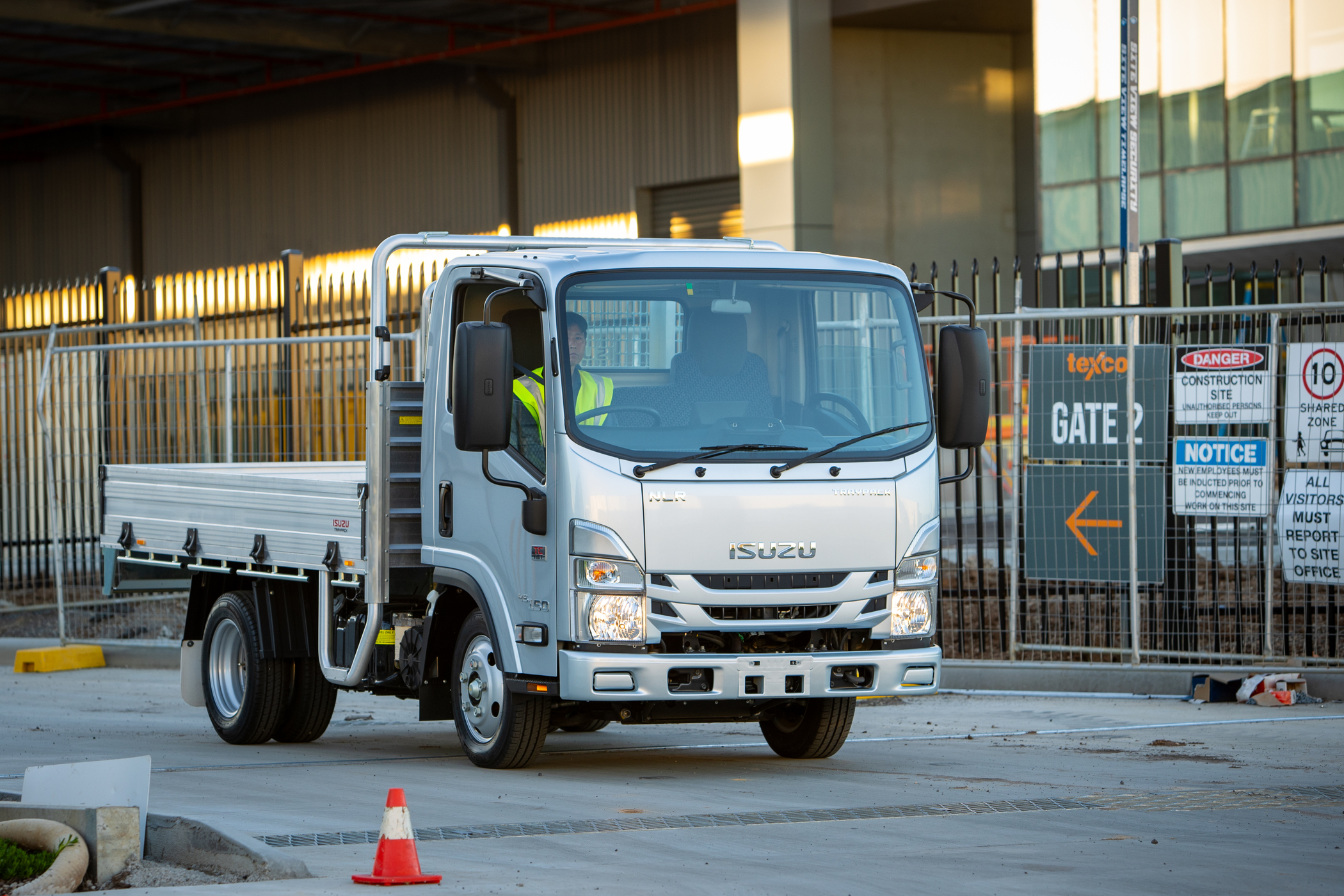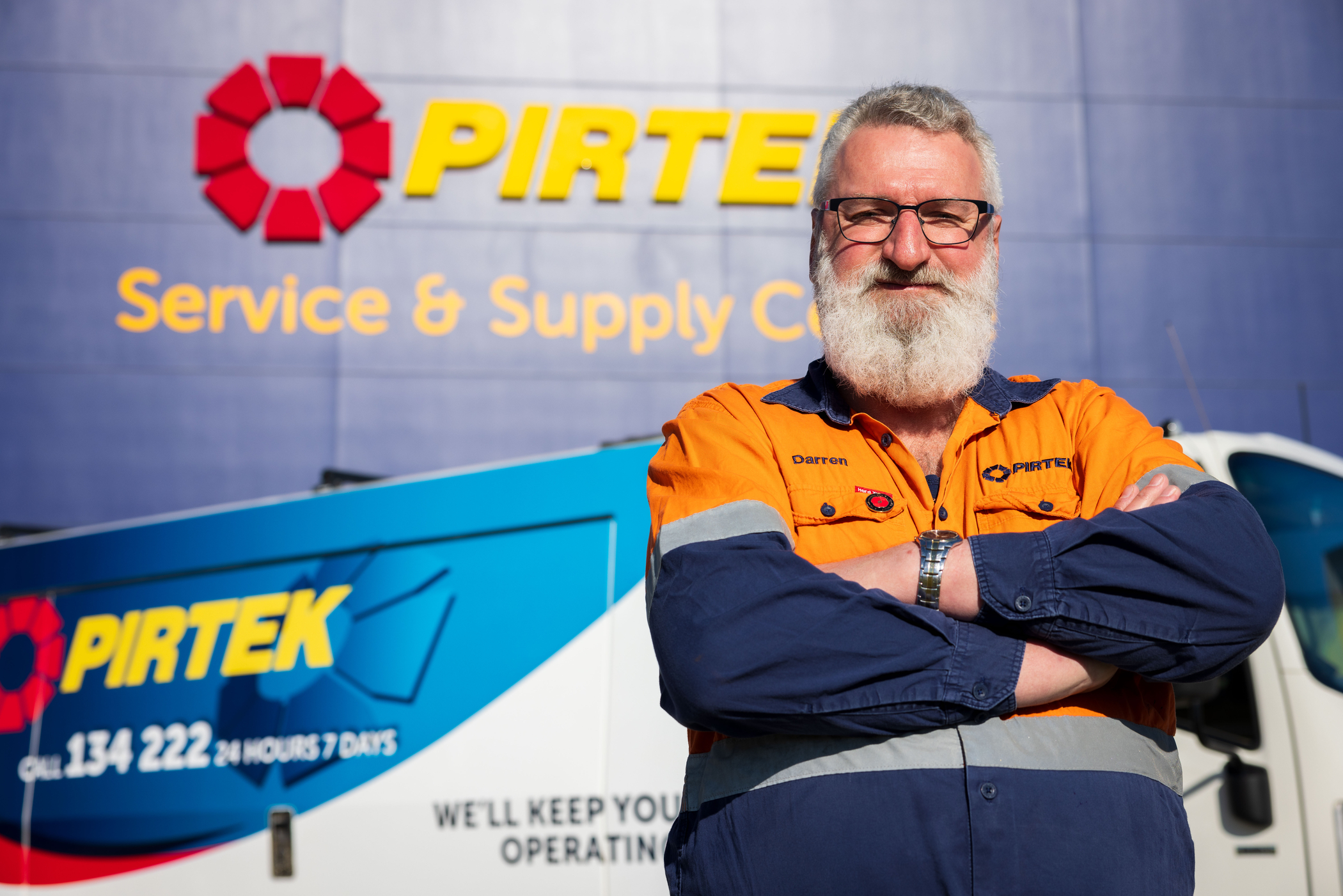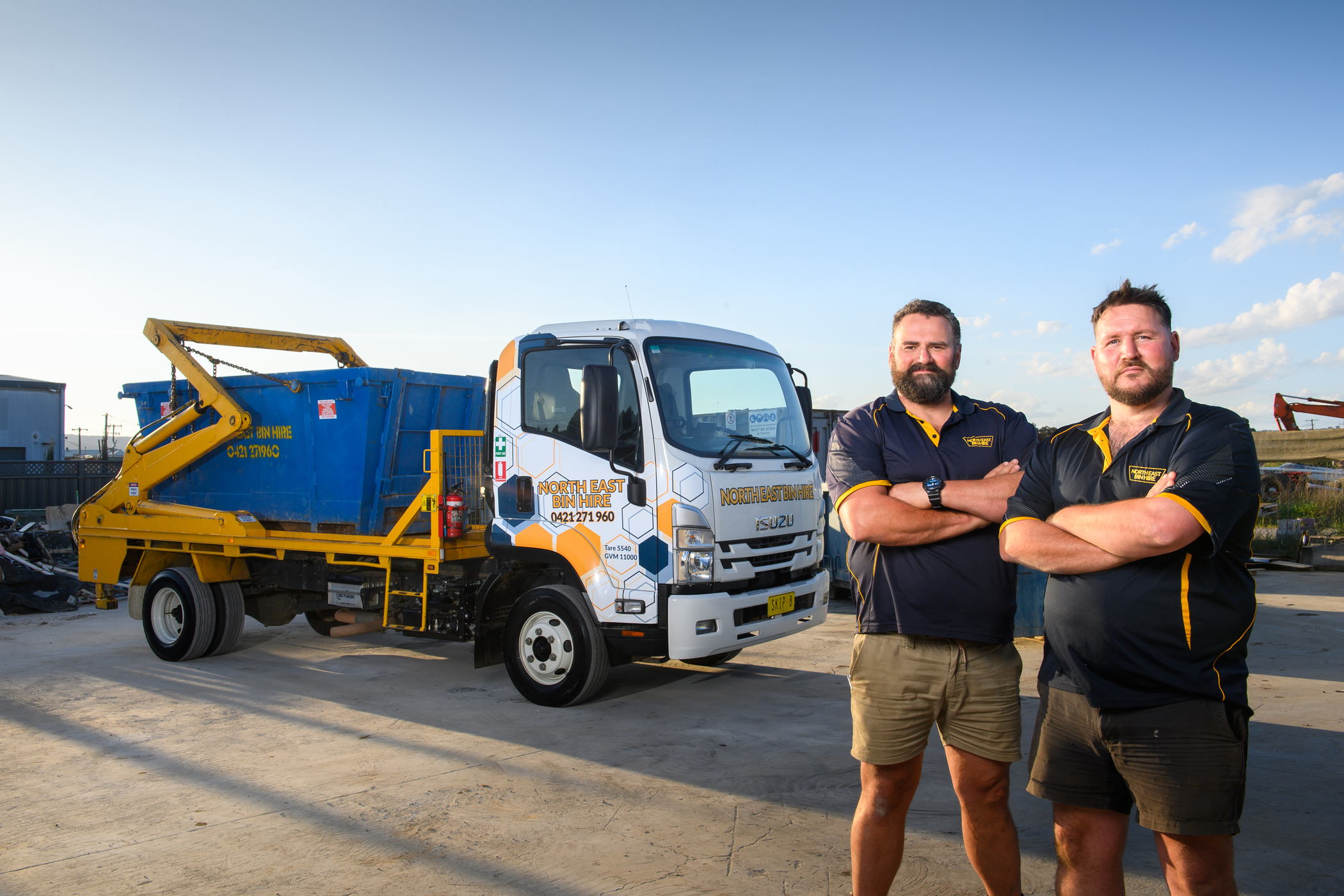[image_gallery][/image_gallery]
Rod Chapman
trucksales.com.au
August 8, 2016
Isuzu's medium-duty FRR 110-240 packs plenty of punch everywhere but the fuel bowser…
Between the explosion of parcel freight and the increasing trend towards urbanisation, the freight task in general for small- and medium-duty trucks only looks set to grow. One manufacturer keen to capitalise on the trend is Isuzu, which recently unveiled a new-look range of medium-duty F Series trucks with GVMs spanning 10.7 to 16.5 tonnes.
Following on from the 2015 introduction of the light-duty
N Series range, the heavier F Series also comes with a raft of upgrades to get the job done better, more easily, and more efficiently.
POWER PLAY
Stealing the limelight in the revamped range is the introduction of two new engines, the four-cylinder 4HK1 and six-cylinder 6HK1 replacing an older six-cylinder predecessor. The new four-cylinder in particular comes with some big promises – Isuzu says it delivers roughly the same power but higher peak torque than the old six, and with better fuel economy.
"It delivers an economy improvement of five per cent over the new [six-cylinder] engine and a minimum of seven per cent over the old one," says Isuzu Australia Limited's Chief Engineer, Simon Humphries.
The new power is the centrepiece of the updated F Series, which also features a number of other revisions to make a good thing better.
Trucksales.com.au recently grabbed an FRR for a week, putting it through its paces in town and country over 600km. Our FRR 110-240 also features the new model nomenclature found in the N Series, and here indicates an 11-tonne GVM paired with a 240hp output.
As such, our test truck is in the middle of Isuzu's entry-level FRR offering, being bookended by the FRR 107-210 (10.7t GVM, 210hp) and FRR 110-260 (11t GVM, 260hp). Both our test vehicle and the lower-power model feature the new four-cylinder engine, while the higher-power FRR utilises the new six-cylinder unit. The 6HK1 produces 256hp and 788Nm.
The test truck came with an eight-pallet curtainsider body loaded with concrete to a travelling weight of around nine tonnes. That's two tonnes shy of its maximum limit but a good load to help us assess its attributes.
Isuzu quotes a recommended retail price of $103,959 plus on-roads for this model as a bare cab/chassis. The curtainsider came from Alltruck Bodies, but buyers are free to fit whatever body meets their needs through liaising with their Isuzu dealer.
Also new is this truck's day-cab format. Previously a space cab, the day-cab layout gives an extra 30cm of load space.
CLIMB ABOARD
The doors open to a full 90 degrees and there are two sturdy grabrails and a grippy steel footplate to help the ascent. Once behind the wheel, it's easy to get comfy thanks to the wide range of adjustment on offer.
The steering wheel is adjustable for tilt and reach and the ISRI 6860 air suspension seat has all manner of buttons to help get things just how you want them. It's a really nice unit, comfy and supportive, and it features an integrated seat belt.
The cab could do with more cup holders (and some bottle holders) but you do get a couple of hooks for coats behind the seating, a centre hook on the dash (great for takeaway!) and a large overhead fluorescent light.
The pedal box is at the right height and there's a dedicated dead pedal for your left foot. Which brings us to the transmission – in this case Isuzu's optional automated six-speed manual.
This new AMT has a torque converter – hence the TC-AMT badging on the test vehicle – and Isuzu says it offers a superior a level of refinement and shifting to an AMT with a fluid coupling.
That much was evident in the first few shifts from take-off – the AMT skips through the gears with speed and precision. It's not as smooth as a true auto but it's not far off it, and of course it still offers all the benefits of a two-pedal arrangement, namely ease of driving and the ability for fleet operators to draw from a wider pool of drivers.
MODEST BUT MIGHTY
We couldn't fault the 4HK1 engine, which took the load without complaint and battled on through the worst Melbourne could throw at it. Rather than 'get by', it actually feels strong and punchy down low and into its midrange, especially from 1500rpm. It revs freely too; in 'normal' (as opposed to 'eco') mode and spins up close to 3000rpm before hooking the next cog.
The AMT shifts intelligently for the most part, but we did find it flicking between fifth and fourth on one long and fairly steep incline – better then to flick the shifter across to manual mode and hold the most appropriate ratio.
The economy mode is there to minimise fuel usage – it essentially lowers the transmission's shift points – and there's a button on the side of the shifter to engage first gear on hill starts.
The transmission's default gear for take-offs is second, so manually selecting first on steeper inclines is the way to go, even though the hill-hold feature does lend a hand in the process.
Aiding fuel economy is the inclusion of an idle-stop feature, which shuts the engine down at rest provided certain criteria (brake pedal pressure and engine temperature, among others) are met. It's fairly unobtrusive in its operation but it can be switched off altogether if desired (it can be a pain in stop/start traffic).
After around 600km of mixed driving, the Isuzu Telematics report delivered an average fuel economy of 21.5L/100km – a very reasonable figure given the load and roads involved. Isuzu says it would expect around 25L/100km for this style of truck with a six-cylinder engine, or under 20L/100km for this truck in a tray body.
There's cruise control for open-road running and an exhaust brake to assist the standard service brakes, which are backed by ABS.
THEM'S THE BRAKES
Speaking of safety, the FRR also benefits from switchable traction control, airbags for the driver and passenger and a cab that meets the ECE-R29 standard for strength.
The service brakes are drums front and rear with a dual air-over-hydraulic setup. It can take a moment or two to build sufficient air pressure on start-up but on the road they offer good, dependable power and deliver sufficient feedback.
Vision from behind the wheel is excellent – the A-pillars are skinny and the split standard/spot mirrors offer a good view to the rear. Both the standard and spot mirrors feature independent electronic adjustment, and there are heaters to clear things up on cold/inclement days.
All the controls are easy to find and easy to reach, with sizeable buttons for most features and chunky twist dials for the heating and air-conditioning. The controls for the DAVE (Digital Audio Visual Unit) could be a little bigger, but the touchscreen itself is easy to use while on the move.
Sat-nav is now standard on this model – another F Series update – but DAVE is far more than a one-trick pony. There's an AM/FM radio as well as DAB+ digital radio (great around town, patchy or unavailable in the country), CD and telematics. Isuzu says that Isuzu Telematics is opening up new levels of efficiency for canny fleet operators, allowing them to track a truck's location on the go and monitor fuel usage, driving style and more.
Hand in hand with this technology is an 'assist' button – press the red button on dash and hold it for five seconds to send an alert to a fleet manager or other nominated party. Thankfully we didn't need to test it…
IN THE CAB
The instrumentation is fairly basic but legible, with an analogue speedo and tacho complemented by a couple of digital displays. The upper one (now considerably larger) is a trip computer, and it provides everything from fuel economy to battery charge, hour meter to diesel particulate diffuser status and more.
Speaking of the DPD, it's a new unit and it conducts a burn as needed automatically. It also helps the engine achieve the equivalent of a Euro 6 emissions standard, without going down the common EGR or SCR routes (so no AdBlue to worry about).
The cab interior maintains the workhorse aesthetic but it's not without its niceties. We appreciated the heavy rubber mats underfoot and the twin overhead storage compartments (although the latter are on the small side). There is a bit of room behind the seating for smaller bags and the centre seat folds down to reveal a work tray with concealed storage – ideal for a phone, wallet, house keys etc.
Routine maintenance is a simple affair: the dipstick for the engine is found just behind the rear cab wall and a panel on the front of the truck lifts up for access to the washer fluid. Tilting the cab is remarkably easy – a one-arm affair, in fact.
On the road, the FRR displays docile and dependable handling – no surprises, and it’s able to take the worst of our roads in its stride. With leaf springs and shockers up front and leaf springs at the rear we're not talking rocket science, but the arrangement gets the job done without fuss.
The truck actually corners relatively flat, its body roll controlled nicely through the bends, but more surprising is its manoeuvrability. For a vehicle measuring just under 7m from tip to tail, the FRR has a tight turning circle of 12.9m (kerb to kerb) – we've driven LCVs that fare far worse in this respect!
Parking is aided by an accessory reversing camera. Up to four cameras can be mounted around the vehicle and displayed on the multimedia screen, if desired. Our test vehicle also had a reversing alarm and a microphone for added safety.
TOP PACKAGE
The FRR represents a solid progression for Isuzu's entry-level medium-duty model. The strong but frugal performance of the new 4HK1 engine will surprise, and standard inclusions like the sat-nav, the ISRI seat and safety gear are sure to grab attention.
Drivers will appreciate the FRR's comfort and ease of operation, especially with the new TC-AMT transmission, while operators will appreciate the solid aftersales service and back-up.
Add to that Isuzu's extensive dealer network and solid resale value, and the FRR appears to stack up on every front.
2016 ISUZU FRR 110-240 SPECIFICATIONS
Engine: '4HK1' 5.2-litre in-line four-cylinder turbo-diesel
Power: 177kW (237hp) at 2400rpm
Torque: 765Nm at 1600rpm
Emissions: ADR 80/03 (but effectively meets ADR 80/04)
Transmission: Isuzu six-speed AMT
Configuration: 4x2
Front suspension: Leaf springs with shocks
Rear suspension: Leaf springs
GVM: 11,000kg
GCM: 16,000kg
Wheelbase: 4060mm
Fuel capacity: 200 litres
Brakes: Drum
Cabs: Day
Safety: Driver/passenger airbags, ABS, traction control, ECE-R29 compliant cab
Price: $103,959 plus on-roads (bare cab/chassis)
Warranty: Three years, 2500 hours or 150,000km (extendable to five years, 5000 hours or 300,000km)
To see the full article and view Rod's test drive video visit:
http://www.trucksales.com.au






